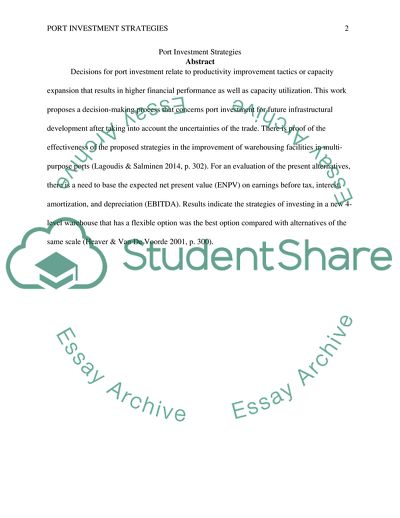Cite this document
(Port Investment Strategies Coursework Example | Topics and Well Written Essays - 2000 words, n.d.)
Port Investment Strategies Coursework Example | Topics and Well Written Essays - 2000 words. https://studentshare.org/marketing/1862940-port-investment
Port Investment Strategies Coursework Example | Topics and Well Written Essays - 2000 words. https://studentshare.org/marketing/1862940-port-investment
(Port Investment Strategies Coursework Example | Topics and Well Written Essays - 2000 Words)
Port Investment Strategies Coursework Example | Topics and Well Written Essays - 2000 Words. https://studentshare.org/marketing/1862940-port-investment.
Port Investment Strategies Coursework Example | Topics and Well Written Essays - 2000 Words. https://studentshare.org/marketing/1862940-port-investment.
“Port Investment Strategies Coursework Example | Topics and Well Written Essays - 2000 Words”. https://studentshare.org/marketing/1862940-port-investment.


